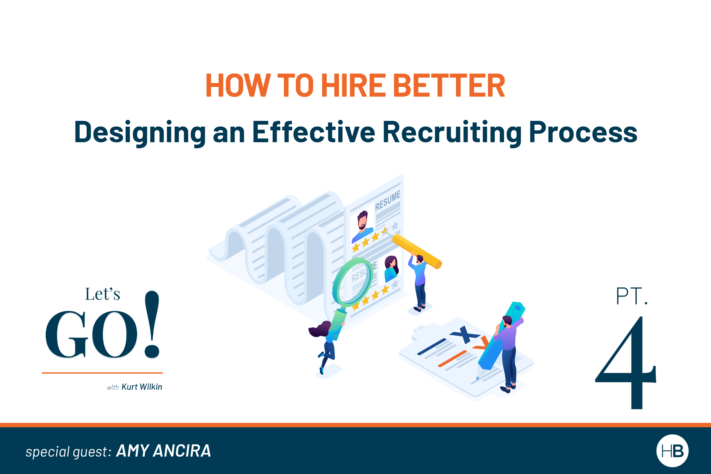Employers across the globe are struggling to hire and attract talent in one of the most competitive talent markets ever. In fact, 67% of CEOs reported that hiring challenges are impacting their ability to operate at full capacity, according to a September CEO Confidence Index by Vistage.
The stakes are high for Founders and CEOs who need the right talent to grow and scale, and yet it’s never been more challenging to hire and keep current teams intact.
The state of hiring today may seem daunting, but as Amy Ancira discusses in Part 4 of our How to Hire Better series, the answer could be much more simple than you’d think. In many cases, hiring game-changing talent in today’s market is a matter of making it easy for top talent to join your team. In other words, it’s time to streamline your hiring process with the candidate in mind.
As simple as it sounds, designing an effective hiring process can be a big task. But you don’t have to do it alone. In the video below, Amy discusses everything you need to know to get started. And if you just can’t tackle it right now, our team can even step in to get it done for you.
Scoping
Scoping is so much more than assessing a candidate by the job description. This involves your company’s expectations, desired outcomes, and the short and long term goals for the role.
Ask your team how the position drives strategy and what purpose this role will serve in your company. Related metrics and KPIs are important to consider at this point. Aside from the experience needed, you may also want to determine what individual characteristics will help make a new hire successful in this role.
Sourcing
Sourcing is the secret sauce behind a successful search. Building the right talent pool involves benchmarking and networking to identify thought leaders and subject matter experts that are the best fit for the position you’re looking to hire for.
Think beyond the usual places you would normally use to find candidates. They could be members of a group you’re involved in or a subject matter expert you met at a conference. Most importantly, the top candidates aren’t looking for a job. They’re already helping build someone else’s company (maybe even your competitor).
Interviewing
It’s critical that you get this part right. Throw away your list of cliché or off-the-wall interview questions right now. Your interview questions must be well-rounded so you would be able to assess the aptitude of your candidates – both hard and soft skills.
It’s during this stage that you should assess if the candidate is a culture-fit. Be open about your company’s mission, vision, values and see how they react. Team members who buy into your mission and align with your company’s values will not only perform better, but they’ll also stick around longer.
Negotiating
The best candidates out there are getting at least 10 offers on a daily basis. How do you stand out? Why should they choose you? You can start by offering competitive compensation and benefits. Don’t lowball your candidates or you will get nowhere fast. Offer 15 – 20% more salary than what the market rate says. Game-changing talent won’t respond to companies that don’t understand their value.
Onboarding
A lot of companies fall short in the Onboarding phase. They think they have sold them on the company and now it’s time to get them ramped up as soon as possible. But this is a move that will often leave you with an empty seat a few months down the road.
Onboarding your new employees means bringing them into your business – giving them purpose and the tools to achieve it. Carve out some time with them and start by putting together a 30/60/90 day plan.
Build that relationship, nurture it, and watch your A player blossom and deliver much more than what you are expecting for.
You need to understand your team and your hiring managers capabilities. It’s not just about knowing how to hire in the current market, but also about your entire team running the same hiring process for a consistent candidate experience. So, invest time into your hiring team to get them aligned and up to date on today’s best hiring practices.
Final Thoughts
Designing an effective recruiting process can be quite the task, especially when you’re up against the clock to achieve key business goals. But one thing is certain: you cannot take your company where you want to go without the right talent. So take the time, tailor your recruiting process for the talent you want to attract, and the results will be well worth it.
Alternatively, many of our clients choose to work with us to design an effective recruiting process. We do this every day of the week, so working with us often means you’ll see results faster. If this sounds like the right solution for your situation, let’s talk.
How to Hire Better | Let’s Go! Mini-Series
Part 1 – Aligning Your Business & Talent Strategies
Part 2 – Setting the Foundation
Part 3 – Recruiting the Right Talent
Part 4 – Designing an Effective Recruiting Process
Part 5 – Coming Soon!


